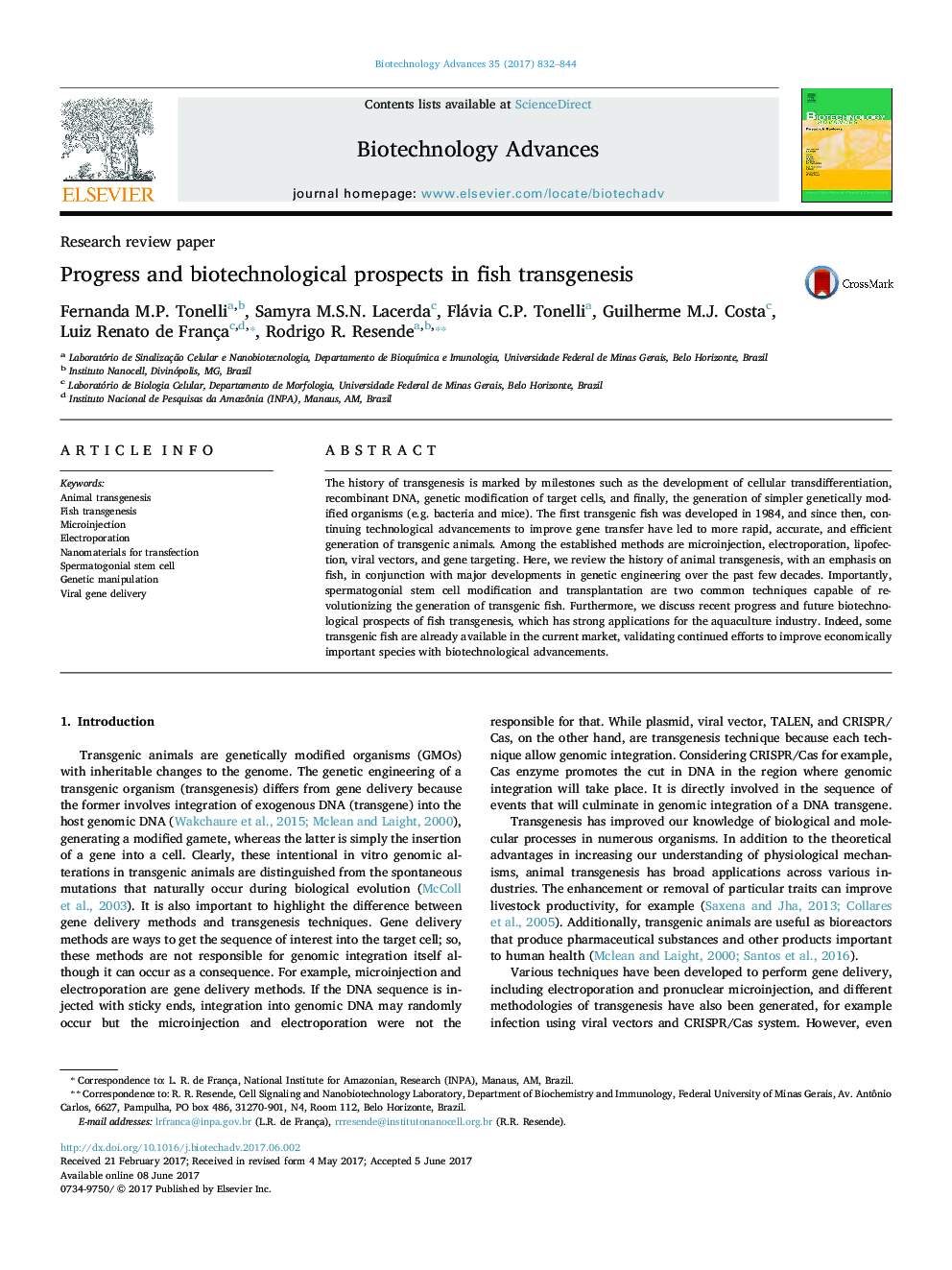| Article ID | Journal | Published Year | Pages | File Type |
|---|---|---|---|---|
| 6451169 | Biotechnology Advances | 2017 | 13 Pages |
â¢A brief evolution history of transgenic animals and fish are presentedâ¢Primary fish gene delivery techniques were highlightedâ¢Methods for site-specific genomic integration, host-independent transposable elements, and viruses were presentedâ¢Spermatogonial-stem-cell transplantation and transgenesis were depictedâ¢And the biotechnological potential of transgenic fish were demonstrated
The history of transgenesis is marked by milestones such as the development of cellular transdifferentiation, recombinant DNA, genetic modification of target cells, and finally, the generation of simpler genetically modified organisms (e.g. bacteria and mice). The first transgenic fish was developed in 1984, and since then, continuing technological advancements to improve gene transfer have led to more rapid, accurate, and efficient generation of transgenic animals. Among the established methods are microinjection, electroporation, lipofection, viral vectors, and gene targeting. Here, we review the history of animal transgenesis, with an emphasis on fish, in conjunction with major developments in genetic engineering over the past few decades. Importantly, spermatogonial stem cell modification and transplantation are two common techniques capable of revolutionizing the generation of transgenic fish. Furthermore, we discuss recent progress and future biotechnological prospects of fish transgenesis, which has strong applications for the aquaculture industry. Indeed, some transgenic fish are already available in the current market, validating continued efforts to improve economically important species with biotechnological advancements.
